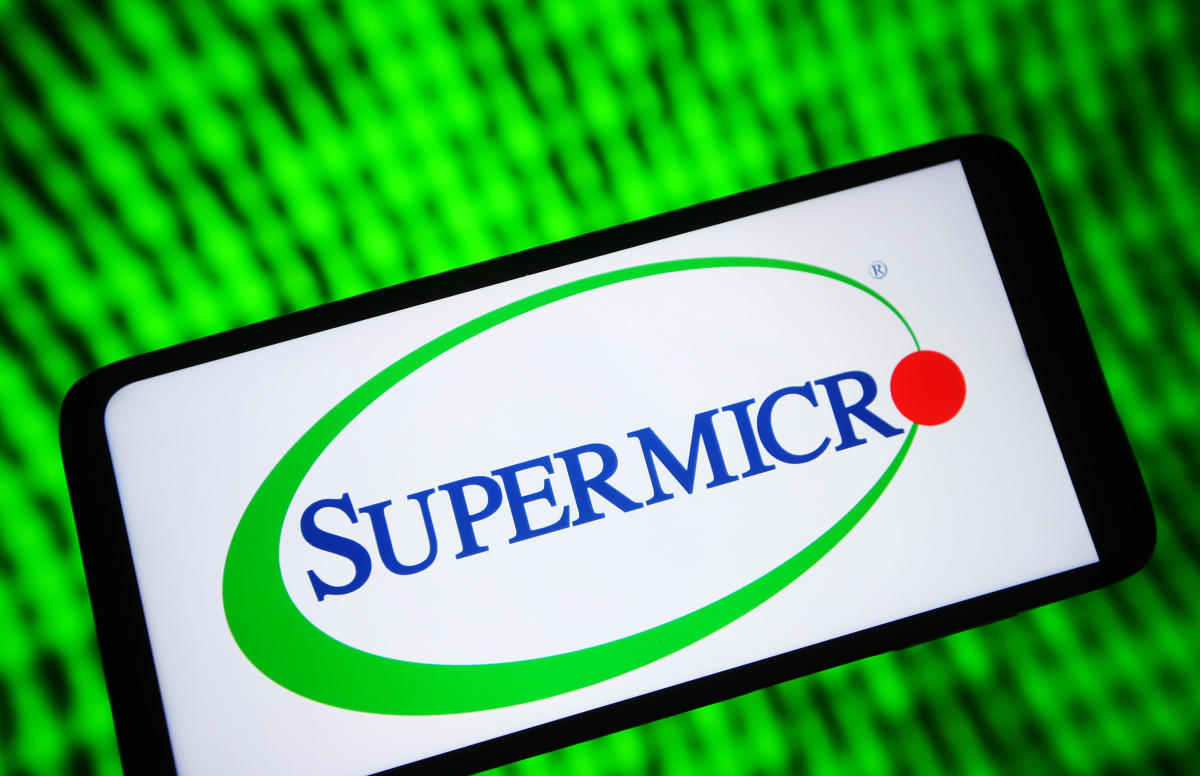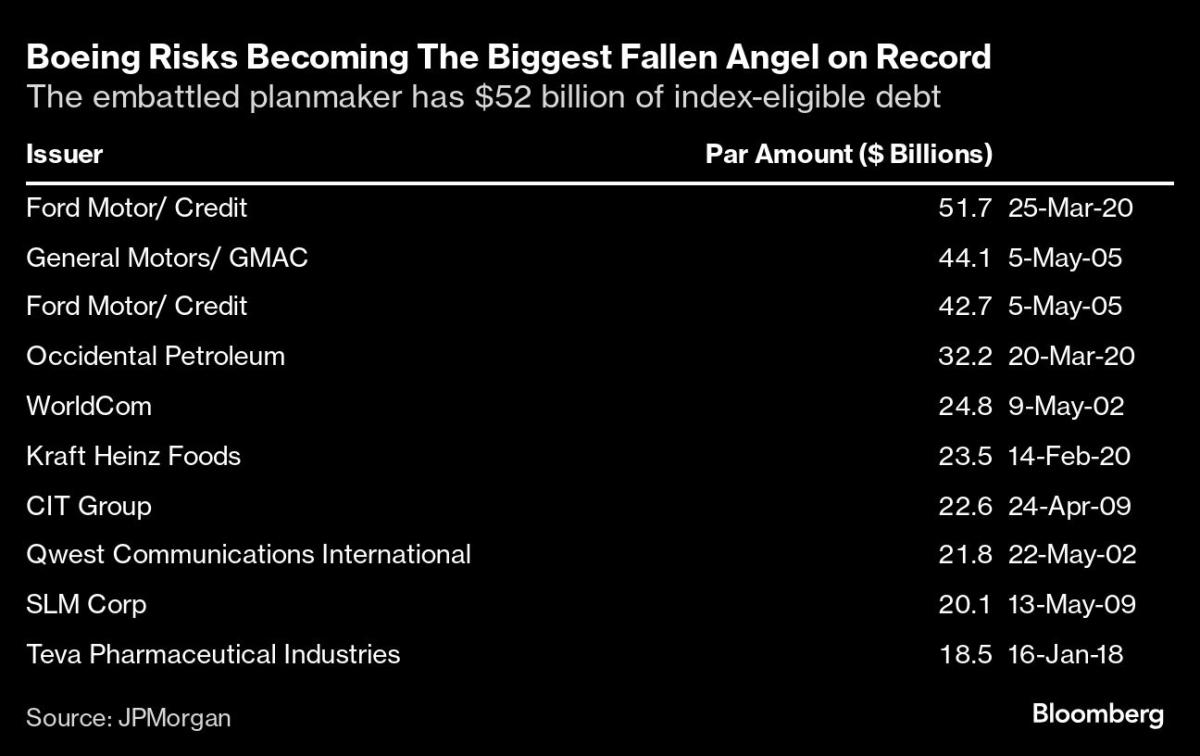CryptoCurrency
Billionaire Stanley Druckenmiller Sold 88% of Duquesne’s Stake in Nvidia and Is Piling Into 2 Unstoppable Stocks

Important data releases aren’t hard to come by on Wall Street. Monthly employment and inflation reports, coupled with earnings season (i.e., six weeks packed full of operating results from public companies), can make it easy for important data to fly under the radar.
While most investors were focused on the heart of earnings season in mid-August, as well as the release of the July inflation report, they may have missed the deadline for Wall Street’s smartest and most-successful money managers to file their Form 13F with the Securities and Exchange Commission. A 13F provides a clear snapshot of which stocks and exchange-traded funds (ETFs) the top money managers purchased and sold in the latest quarter.
What’s particularly noteworthy about the latest round of 13Fs is that Wall Street’s hottest artificial intelligence (AI) stock, Nvidia (NASDAQ: NVDA), was sent to the chopping block by at least seven billionaire asset managers for the third consecutive quarter.
Perhaps the most prominent seller was billionaire Stanley Druckenmiller of Duquesne Family Office.
Stanley Druckenmiller slashed his fund’s stake in Nvidia
Druckenmiller tends to minimize risks when investing and attempts to align his portfolio with the health of the U.S. and global economy. During the second quarter, a number of tech stocks were pared down or sold in their entirety by Duquesne’s investment team, including Nvidia. The 1,545.370 shares sold by Druckenmiller reduced his fund’s stake in Wall Street’s AI darling by roughly 88% to just 214,060 shares.
On the bright side, Nvidia has maintained its monopoly like status as the preferred provider of AI-graphics processing units (GPUs) used in high-compute data centers. The analysts at TechInsights pegged Nvidia’s share of GPUs shipped to enterprise data centers at 98% in 2022 and 2023. Given the persistently strong demand for the H100 and next-generation Blackwell chip, Nvidia seems unlikely to cede its top spot anytime soon.
But there’s another side to Nvidia’s growth story that unabashed optimists and Wall Street may be overlooking.
To begin with, there hasn’t been a game-changing innovation for three decades that’s avoided a bubble-bursting event early in its existence. In simpler terms, investors have consistently overestimated how quickly a new technology or innovation would become mainstream with consumers and/or businesses. The fact that most companies lack a well-defined game plan to generate a positive return on their AI investments is a strong clue that we’re in the early stages of what’s likely another bubble-bursting event.
Druckenmiller might also be anticipating competitive pressures weighing on Nvidia’s margins and, eventually, its bottom line. While new chips coming to market from competitors is expected, the bigger concern might be that all four of Nvidia’s largest customers by net sales are developing AI-GPUs of their own. Even if Nvidia’s chips are faster and more energy efficient, the ease of access and cost advantages of internally developed chips will lead to fewer opportunities for Nvidia in the future.
I’d be remiss if I didn’t also mention that no insiders have purchased shares of Nvidia on the open market since December 2020. This looks to be a clear signal that shares of Nvidia aren’t the bargain they once were.
But while Druckenmiller was dumping most of Duquesne’s stake in Nvidia during the June-ended quarter, he was piling into two unstoppable companies.

Philip Morris International
The first smoking-hot deal that billionaire Stanley Druckenmiller found irresistible in the second quarter is tobacco goliath Philip Morris International (NYSE: PM). His fund purchased 889,355 shares of Philip Morris (worth around $90.1 million, as of the midpoint of 2024), as well as call options that give Duquesne the right to purchase up to 963,000 additional shares.
For years, tobacco stocks have been yesterday’s news. Some developed countries have restricted the ability of tobacco companies to advertise, and consumers are now more aware of the potential dangers to their health of using tobacco products. Despite these challenges, Philip Morris’s stock hit an all-time closing high in September.
One catalyst that’s seemingly always in the corner of tobacco stocks is their pricing power. Tobacco contains nicotine, which is an addictive chemical. This addictive quality allows tobacco companies to raise the price on their products — especially premium brands, such as Marlboro — without chasing away their customers. Thus, even with cigarette shipments declining in developed markets, revenue continues to climb.
Philip Morris also enjoys unparalleled geographic diversity. This is a company with operations in 180 countries. If regulations for the tobacco industry become unfavorable in certain developed markets, Philip Morris can simply lean on emerging markets, where tobacco may still be considered a luxury item, to pick up the slack.
Additionally, Philip Morris is investing for a smokeless future. The company’s smoke-free business accounted for 38% of net sales during the June-ended quarter, with its IQOS heated tobacco units leading the charge. The total number of IQOS users reached 30.8 million in the second quarter (up 1.9 million from the end of 2023), with its IQOS device commanding a greater than 8% share of the heated tobacco market in countries where IQOS is sold.
Although Philip Morris’s stock is at the high end of its valuation range over the last decade — currently 17 times forward-year earnings — Druckenmiller’s fund is likely already up between 20% and 30% on its stake.
Kinder Morgan
The other unstoppable stock that billionaire Stanley Druckenmiller piled into during the June-ended quarter is energy goliath Kinder Morgan (NYSE: KMI). Duquesne’s 13F shows that 2,872,665 shares of Kinder Morgan were purchased, which increased the fund’s existing stake by 74% to 6,753,165 shares.
Investor sentiment toward oil and gas stocks has been mixed since the COVID-19 pandemic. The historic demand cliff observed during the early stages of the pandemic clobbered drillers. However, Kinder Morgan’s operations have been largely unfazed.
The reason Kinder Morgan has thrived is because it’s a midstream energy company. It’s effectively a middleman that’s responsible for transporting, storing, processing, and treating natural gas and natural gas liquids, as well as petroleum products.
The beautiful thing about midstream energy companies (and Kinder Morgan is no exception) is that they primarily operate on fixed-fee contracts. Cementing long-term fixed-fee deals with drilling companies ensures that energy commodity spot-price volatility and inflation are non-factors. This leads to highly predictable operating cash flow year after year, which comes in especially handy for midstream providers.
Being able to accurately forecast operating cash flow a year or more in advance is what gives Kinder Morgan’s board the confidence to dole out what’s currently a nearly 5% dividend yield. Further, it affords management the ability to make bolt-on acquisitions that can rapidly expand its infrastructure and add to its cash flow.
Interestingly enough, the three-year stretch during the pandemic where global energy companies slashed their capital expenditures (capex) might also be a long-term positive for Kinder Morgan. Reducing capex tightened the global supply of crude oil and lifted its spot price. If the spot price for in-demand energy commodities remains high, it’ll likely incent more production and afford Kinder Morgan the opportunity to land lucrative, fixed-fee contracts.
Kinder Morgan is currently valued at 9.7 times forecast cash flow for 2025, which is its priciest multiple to cash flow since 2019. But with Druckenmiller’s fund gaining in the neighborhood of 20% to 30% on its stake in Kinder Morgan in a couple of months, I doubt he or his investment team are complaining.
Don’t miss this second chance at a potentially lucrative opportunity
Ever feel like you missed the boat in buying the most successful stocks? Then you’ll want to hear this.
On rare occasions, our expert team of analysts issues a “Double Down” stock recommendation for companies that they think are about to pop. If you’re worried you’ve already missed your chance to invest, now is the best time to buy before it’s too late. And the numbers speak for themselves:
-
Amazon: if you invested $1,000 when we doubled down in 2010, you’d have $20,579!*
-
Apple: if you invested $1,000 when we doubled down in 2008, you’d have $42,710!*
-
Netflix: if you invested $1,000 when we doubled down in 2004, you’d have $389,239!*
Right now, we’re issuing “Double Down” alerts for three incredible companies, and there may not be another chance like this anytime soon.
*Stock Advisor returns as of October 7, 2024
Sean Williams has no position in any of the stocks mentioned. The Motley Fool has positions in and recommends Kinder Morgan and Nvidia. The Motley Fool recommends Philip Morris International. The Motley Fool has a disclosure policy.
Billionaire Stanley Druckenmiller Sold 88% of Duquesne’s Stake in Nvidia and Is Piling Into 2 Unstoppable Stocks was originally published by The Motley Fool
CryptoCurrency
CPI data to drive 'favorable impact' on Bitcoin prices — 21Shares


Consumer prices in the US rose by 2.4% in September, above market expectations but still in a negative trend compared to the past few years.
CryptoCurrency
Georgia opposition debuts civil blockchain project ahead of critical elections


Georgia’s political opposition wants to use blockchain technology to develop civil society and the country’s business landscape.
CryptoCurrency
Super Micro Computer stock continues wild ride as investors weigh AI hype against alleged DOJ probe

Super Micro Computer (SMCI) stock fell 2.5% Thursday after rallying as much as 9% the day before, continuing its rollercoaster ride of a week as investors swing between optimism over the company’s strong financials and cautiousness over its regulatory risks.
Super Micro is reportedly being investigated by the Department of Justice over allegations of shady business practices outlined in a scathing report by short seller firm Hindenburg Research in late August. That has pressured the stock, which has hovered under $50 per share since then.
This week, SMCI climbed on positive reports from the AI server maker. Super Micro surged 16% Monday after the company released numbers showing strong demand for its products. The stock was up 12% on Thursday from the prior week.
Super Micro makes servers using Nvidia’s (NVDA) AI chips for data centers that power artificial intelligence software. The company said it’s shipping servers containing over 100,000 Nvidia GPUs per quarter “for some of the largest AI factories ever built.”
Then on Tuesday, shares of SMCI fell 5% after a promising premarket rally that saw the stock jump as much as 7%. Daniel Newman, CEO of the Futurum Group, said investors’ euphoria over the company’s shipment data faded against the backdrop of Super Micro’s regulatory risk.
“I think one piece of good news hardly undoes multiple months of significant financial and regulatory scrutiny around a company like this,” Newman said.
The Hindenburg report in August accused Super Micro of shoddy accounting, undisclosed relationships between its CEO and companies it does business with, and violations of US export bans. For example, Hindenburg said Super Micro has shipped servers to sanctioned Russian firms through shell companies, some of which were likely used by its military for its war against Ukraine.
The day after Hindenburg released its report, Super Micro shares dropped 20%. The company also delayed filing its annual 10-K report to the US Securities and Exchange Commission. Super Micro’s woes continued with a Wall Street Journal report of an alleged DOJ probe, which sent shares tumbling in late September.
Super Micro CEO Charles Liang said the Hindenburg report contained “false or inaccurate statements” and “misleading presentations of information that we have previously shared publicly.” Liang said the company’s delayed 10-K filing would not affect the company’s fourth quarter financial results, adding that Super Micro would address Hindenburg’s allegations “in due course.”
Super Micro’s stock climb this week displays the tension between its potential as a key player in the AI boom and its regulatory hurdles.
“This is a high-risk reward,” Newman said. “If they get absolved of all of this, there’s a very good chance it’s going to see a pretty nice move to the upside.” Of the Wall Street analysts tracked by Bloomberg who are covering the stock, seven have a Buy rating on the stock, while 11 maintain a Hold rating. Only one analyst recommends selling the stock.
Analysts see shares rising to $66 over the next 12 months.
The company reported mixed results in its last earnings report. Super Micro’s most recent quarterly revenue of $5.3 billion for the three months ended June 30 barely missed Wall Street’s expectations, but was 143% higher than the prior year. On the other hand, Super Micro earnings per share for the company’s fiscal fourth quarter of $0.63 were far lower than analysts’ consensus forecast of $0.83, according to Bloomberg data.
Argus Research analyst Jim Kelleher told investors in a note on Oct. 3 to buy the dip, noting that Super Micro “has been growing sales and earnings much more rapidly than the Tech industry in recent years.” Wall Street expects Super Micro to report revenues of $6.5 billion for the period ended Sept. 30, up 206% from the previous year. The company has not yet confirmed a date for its next earnings release.
“At this point, we are assuming that any accounting irregularities should they exist are minor and can be addressed while requiring re-issued financial documents,” Kelleher said, adding that Super Micro’s recent 10-for-1 stock split on Oct. 1 “broadens the potential investor pool and should be a long-term positive.”
Despite his long-term optimism, Kelleher lowered his 12-month price target for the stock from $100 to $70.
Laura Bratton is a reporter for Yahoo Finance.
Click here for the latest stock market news and in-depth analysis, including events that move stocks
Read the latest financial and business news from Yahoo Finance
CryptoCurrency
Boeing Would Be Biggest-Ever US ‘Fallen Angel’ If Cut to Junk

(Bloomberg) — If cut to junk status, Boeing Co. will be the biggest US corporate borrower to ever be stripped of its investment-grade ratings, flooding the high-yield bond market with a record volume of new bonds to absorb.
Most Read from Bloomberg
On Tuesday, S&P Global Ratings said it’s considering downgrading the planemaker to junk as strikes at its manufacturing sites persist, hurting production. Last month, Moody’s Ratings said it’s considering a similar move. Fitch Ratings has highlighted the growing risks but not yet announced a review.
Downgrades to junk from two of Boeing’s three major credit graders would leave much of its $52 billion of outstanding long-term debt ineligible for inclusion in investment-grade indexes. If that happens, Boeing would become the biggest ever fallen angel — industry parlance for a company that’s lost its investment-grade ratings — by index-eligible debt, according to JPMorgan Chase & Co. analysts.
“Boeing has worn out its welcome in the investment-grade index,” said Bill Zox, a portfolio manager at Brandywine Global Investment Management. “But the high-yield index would be honored to welcome Boeing and its many coupon step-ups.”
A spokesperson for Boeing declined to comment for this story.
‘Idiosyncratic Credit Situation’
JPMorgan isn’t taking a view on the likelihood of Boeing transitioning to junk or what such a transition would mean for its credit fundamentals, strategists led by Eric Beinstein and Nathaniel Rosenbaum wrote in a Thursday note.
There could be a relatively seamless transition, the strategists wrote. Credit spreads are tight trading conditions are relatively liquid trading in both the high-grade and high-yield markets, the strategists wrote. Much of of Boeing’s debt has a coupon step-up feature — where the interest rate increases by 0.25 percentage point for each step below investment-grade that each ratings firm downgrades by, which could make it more palatable to some investors, including insurers.
“Usually downgrades from high-grade to high-yield are clustered together around economic downturns or crisis,” the analysts wrote. “This is an idiosyncratic credit situation, should a downgrade occur. No other large fallen angel has ever transitioned at such tight spreads.”
The corporate bond market has swelled in recent years, so even if Boeing has more debt than other borrowers have had historically, it takes up a smaller part of the investment-grade universe. The company makes up just 0.7% of Bloomberg’s US corporate investment-grade bond index. When Ford Motor Co. and General Motors Co. were downgraded in 2005, they took up 8.3% and 3% of the high-grade market respectively, according to JPMorgan.
But there are also reasons for the transition to potentially result in big price moves for the company’s debt. Boeing’s $52 billion debt load is big by junk issuer standards. And it has a relatively high proportion of longer-dated debt, while most high-yield investors focus on shorter- and intermediate-term securities to help manage credit risk.
High-grade and high-yield funds, which pool together bonds according to factors like credit quality and maturity to pay regular returns to investors, could also be impacted. More passive fund investors have piled into the high-grade market over the years, which would mean a higher volume of “forced sellers” if Boeing is downgraded, according to JPMorgan.
“I would expect a fair amount of index-related selling as the debt changes hands between the investment-grade and high-yield markets,” said Scott Kimball, chief investment officer at Loop Capital Asset Management. “It wouldn’t surprise me if things got ugly as high-yield investors aren’t as beholden to benchmarks, generally.”
Since active high-yield managers are not going be “forced buyers,” they will have a greater degree of price-setting power, according to Kimball.
“The liquidity transfer costs are real,” he said. “High-yield buyers, being less index-focused, are the ones setting the price. It’s the opposite of upgrades where passive money is more prevalent.”
Most Read from Bloomberg Businessweek
©2024 Bloomberg L.P.
CryptoCurrency
10 crypto theories that missed as badly as ‘Peter Todd is Satoshi’


The “Peter Todd is Satoshi” claim isn’t the first time a misguided theory has appeared in crypto. Here’s 10 more ideas that turned out wrong.
CryptoCurrency
Uniswap launches its own layer-2, Unichain


The app chain promises faster and cheaper transactions and cross-chain interoperability, according to Uniswap.
-

 Science & Environment3 weeks ago
Science & Environment3 weeks agoHow to unsnarl a tangle of threads, according to physics
-

 Science & Environment3 weeks ago
Science & Environment3 weeks agoHyperelastic gel is one of the stretchiest materials known to science
-

 Technology3 weeks ago
Technology3 weeks agoWould-be reality TV contestants ‘not looking real’
-

 Womens Workouts2 weeks ago
Womens Workouts2 weeks ago3 Day Full Body Women’s Dumbbell Only Workout
-

 Science & Environment3 weeks ago
Science & Environment3 weeks agoMaxwell’s demon charges quantum batteries inside of a quantum computer
-

 Science & Environment3 weeks ago
Science & Environment3 weeks ago‘Running of the bulls’ festival crowds move like charged particles
-
News4 weeks ago
the pick of new debut fiction
-

 Science & Environment3 weeks ago
Science & Environment3 weeks agoITER: Is the world’s biggest fusion experiment dead after new delay to 2035?
-

 Science & Environment3 weeks ago
Science & Environment3 weeks agoLiquid crystals could improve quantum communication devices
-

 Science & Environment3 weeks ago
Science & Environment3 weeks agoHow to wrap your mind around the real multiverse
-

 Science & Environment3 weeks ago
Science & Environment3 weeks agoSunlight-trapping device can generate temperatures over 1000°C
-

 Science & Environment3 weeks ago
Science & Environment3 weeks agoQuantum ‘supersolid’ matter stirred using magnets
-

 News3 weeks ago
News3 weeks agoOur millionaire neighbour blocks us from using public footpath & screams at us in street.. it’s like living in a WARZONE – WordupNews
-

 Science & Environment3 weeks ago
Science & Environment3 weeks agoWhy this is a golden age for life to thrive across the universe
-

 Science & Environment3 weeks ago
Science & Environment3 weeks agoQuantum forces used to automatically assemble tiny device
-

 Science & Environment3 weeks ago
Science & Environment3 weeks agoNerve fibres in the brain could generate quantum entanglement
-

 Science & Environment3 weeks ago
Science & Environment3 weeks agoPhysicists are grappling with their own reproducibility crisis
-

 Science & Environment3 weeks ago
Science & Environment3 weeks agoTime travel sci-fi novel is a rip-roaringly good thought experiment
-

 Science & Environment3 weeks ago
Science & Environment3 weeks agoLaser helps turn an electron into a coil of mass and charge
-

 Science & Environment3 weeks ago
Science & Environment3 weeks agoNuclear fusion experiment overcomes two key operating hurdles
-

 Science & Environment2 weeks ago
Science & Environment2 weeks agoX-rays reveal half-billion-year-old insect ancestor
-
Business2 weeks ago
Eurosceptic Andrej Babiš eyes return to power in Czech Republic
-

 News4 weeks ago
News4 weeks ago▶️ Hamas in the West Bank: Rising Support and Deadly Attacks You Might Not Know About
-

 Science & Environment3 weeks ago
Science & Environment3 weeks agoCaroline Ellison aims to duck prison sentence for role in FTX collapse
-

 News3 weeks ago
News3 weeks agoYou’re a Hypocrite, And So Am I
-

 Sport3 weeks ago
Sport3 weeks agoJoshua vs Dubois: Chris Eubank Jr says ‘AJ’ could beat Tyson Fury and any other heavyweight in the world
-

 Science & Environment3 weeks ago
Science & Environment3 weeks agoA slight curve helps rocks make the biggest splash
-

 Technology2 weeks ago
Technology2 weeks agoIs sharing your smartphone PIN part of a healthy relationship?
-

 News3 weeks ago
News3 weeks ago▶️ Media Bias: How They Spin Attack on Hezbollah and Ignore the Reality
-

 Technology2 weeks ago
Technology2 weeks ago‘From a toaster to a server’: UK startup promises 5x ‘speed up without changing a line of code’ as it plans to take on Nvidia, AMD in the generative AI battlefield
-

 Football2 weeks ago
Football2 weeks agoFootball Focus: Martin Keown on Liverpool’s Alisson Becker
-

 News4 weeks ago
News4 weeks agoNew investigation ordered into ‘doorstep murder’ of Alistair Wilson
-

 Science & Environment3 weeks ago
Science & Environment3 weeks agoRethinking space and time could let us do away with dark matter
-
News3 weeks ago
The Project Censored Newsletter – May 2024
-

 Technology2 weeks ago
Technology2 weeks agoQuantum computers may work better when they ignore causality
-
Business2 weeks ago
Should London’s tax exiles head for Spain, Italy . . . or Wales?
-

 MMA2 weeks ago
MMA2 weeks agoConor McGregor challenges ‘woeful’ Belal Muhammad, tells Ilia Topuria it’s ‘on sight’
-

 Sport2 weeks ago
Sport2 weeks agoWatch UFC star deliver ‘one of the most brutal knockouts ever’ that left opponent laid spark out on the canvas
-

 Science & Environment3 weeks ago
Science & Environment3 weeks agoA new kind of experiment at the Large Hadron Collider could unravel quantum reality
-

 Science & Environment3 weeks ago
Science & Environment3 weeks agoFuture of fusion: How the UK’s JET reactor paved the way for ITER
-

 News3 weeks ago
News3 weeks agoIsrael strikes Lebanese targets as Hizbollah chief warns of ‘red lines’ crossed
-

 Technology2 weeks ago
Technology2 weeks agoGet ready for Meta Connect
-
Business1 week ago
Ukraine faces its darkest hour
-

 Health & fitness3 weeks ago
Health & fitness3 weeks agoThe secret to a six pack – and how to keep your washboard abs in 2022
-

 Science & Environment3 weeks ago
Science & Environment3 weeks agoWhy we need to invoke philosophy to judge bizarre concepts in science
-

 Science & Environment3 weeks ago
Science & Environment3 weeks agoA tale of two mysteries: ghostly neutrinos and the proton decay puzzle
-

 Science & Environment3 weeks ago
Science & Environment3 weeks agoUK spurns European invitation to join ITER nuclear fusion project
-

 Health & fitness2 weeks ago
Health & fitness2 weeks agoThe 7 lifestyle habits you can stop now for a slimmer face by next week
-

 Technology3 weeks ago
Technology3 weeks agoThe ‘superfood’ taking over fields in northern India
-

 CryptoCurrency3 weeks ago
CryptoCurrency3 weeks agoCardano founder to meet Argentina president Javier Milei
-
Politics3 weeks ago
UK consumer confidence falls sharply amid fears of ‘painful’ budget | Economics
-

 MMA3 weeks ago
MMA3 weeks agoRankings Show: Is Umar Nurmagomedov a lock to become UFC champion?
-

 News3 weeks ago
News3 weeks agoWhy Is Everyone Excited About These Smart Insoles?
-

 Science & Environment3 weeks ago
Science & Environment3 weeks agoMeet the world's first female male model | 7.30
-

 News3 weeks ago
News3 weeks agoFour dead & 18 injured in horror mass shooting with victims ‘caught in crossfire’ as cops hunt multiple gunmen
-

 Womens Workouts2 weeks ago
Womens Workouts2 weeks ago3 Day Full Body Toning Workout for Women
-

 Technology2 weeks ago
Technology2 weeks agoRobo-tuna reveals how foldable fins help the speedy fish manoeuvre
-

 News4 weeks ago
News4 weeks agoHow FedEx CEO Raj Subramaniam Is Adapting to a Post-Pandemic Economy
-

 Health & fitness3 weeks ago
Health & fitness3 weeks agoThe maps that could hold the secret to curing cancer
-

 Science & Environment3 weeks ago
Science & Environment3 weeks agoBeing in two places at once could make a quantum battery charge faster
-

 CryptoCurrency3 weeks ago
CryptoCurrency3 weeks agoLow users, sex predators kill Korean metaverses, 3AC sues Terra: Asia Express
-

 Womens Workouts3 weeks ago
Womens Workouts3 weeks agoBest Exercises if You Want to Build a Great Physique
-

 Womens Workouts3 weeks ago
Womens Workouts3 weeks agoEverything a Beginner Needs to Know About Squatting
-

 TV3 weeks ago
TV3 weeks agoCNN TÜRK – 🔴 Canlı Yayın ᴴᴰ – Canlı TV izle
-

 Science & Environment3 weeks ago
Science & Environment3 weeks agoCNN TÜRK – 🔴 Canlı Yayın ᴴᴰ – Canlı TV izle
-

 Servers computers2 weeks ago
Servers computers2 weeks agoWhat are the benefits of Blade servers compared to rack servers?
-

 Technology2 weeks ago
Technology2 weeks agoThe best robot vacuum cleaners of 2024
-
Business3 weeks ago
JPMorgan in talks to take over Apple credit card from Goldman Sachs
-

 Science & Environment3 weeks ago
Science & Environment3 weeks agoQuantum time travel: The experiment to ‘send a particle into the past’
-

 Science & Environment3 weeks ago
Science & Environment3 weeks agoMost accurate clock ever can tick for 40 billion years without error
-

 Science & Environment3 weeks ago
Science & Environment3 weeks agoHow one theory ties together everything we know about the universe
-

 News3 weeks ago
News3 weeks agoChurch same-sex split affecting bishop appointments
-

 Science & Environment3 weeks ago
Science & Environment3 weeks agoTiny magnet could help measure gravity on the quantum scale
-

 CryptoCurrency3 weeks ago
CryptoCurrency3 weeks agoDecentraland X account hacked, phishing scam targets MANA airdrop
-

 CryptoCurrency3 weeks ago
CryptoCurrency3 weeks agoBitcoin miners steamrolled after electricity thefts, exchange ‘closure’ scam: Asia Express
-

 CryptoCurrency3 weeks ago
CryptoCurrency3 weeks agoDorsey’s ‘marketplace of algorithms’ could fix social media… so why hasn’t it?
-

 CryptoCurrency3 weeks ago
CryptoCurrency3 weeks agoDZ Bank partners with Boerse Stuttgart for crypto trading
-

 CryptoCurrency3 weeks ago
CryptoCurrency3 weeks agoBitcoin bulls target $64K BTC price hurdle as US stocks eye new record
-

 Sport3 weeks ago
Sport3 weeks agoUFC Edmonton fight card revealed, including Brandon Moreno vs. Amir Albazi headliner
-

 CryptoCurrency3 weeks ago
CryptoCurrency3 weeks agoBlockdaemon mulls 2026 IPO: Report
-
Business3 weeks ago
Thames Water seeks extension on debt terms to avoid renationalisation
-

 CryptoCurrency3 weeks ago
CryptoCurrency3 weeks agoEthereum is a 'contrarian bet' into 2025, says Bitwise exec
-

 CryptoCurrency3 weeks ago
CryptoCurrency3 weeks agoCoinbase’s cbBTC surges to third-largest wrapped BTC token in just one week
-

 News2 weeks ago
News2 weeks agoUS Newspapers Diluting Democratic Discourse with Political Bias
-

 Politics3 weeks ago
Politics3 weeks agoTrump says he will meet with Indian Prime Minister Narendra Modi next week
-

 Science & Environment3 weeks ago
Science & Environment3 weeks agoPhysicists have worked out how to melt any material
-

 Science & Environment3 weeks ago
Science & Environment3 weeks agoHow do you recycle a nuclear fusion reactor? We’re about to find out
-

 CryptoCurrency3 weeks ago
CryptoCurrency3 weeks agoRedStone integrates first oracle price feeds on TON blockchain
-

 CryptoCurrency3 weeks ago
CryptoCurrency3 weeks ago‘No matter how bad it gets, there’s a lot going on with NFTs’: 24 Hours of Art, NFT Creator
-
Business3 weeks ago
How Labour donor’s largesse tarnished government’s squeaky clean image
-
Politics3 weeks ago
‘Appalling’ rows over Sue Gray must stop, senior ministers say | Sue Gray
-

 Technology3 weeks ago
Technology3 weeks agoiPhone 15 Pro Max Camera Review: Depth and Reach
-

 News3 weeks ago
News3 weeks agoBrian Tyree Henry on voicing young Megatron, his love for villain roles
-

 News3 weeks ago
News3 weeks agoBrian Tyree Henry on voicing young Megatron, his love for villain roles
-

 Travel2 weeks ago
Travel2 weeks agoDelta signs codeshare agreement with SAS
-

 Politics2 weeks ago
Politics2 weeks agoHope, finally? Keir Starmer’s first conference in power – podcast | News
-

 CryptoCurrency3 weeks ago
CryptoCurrency3 weeks agoLouisiana takes first crypto payment over Bitcoin Lightning
-

 CryptoCurrency3 weeks ago
CryptoCurrency3 weeks agoCrypto scammers orchestrate massive hack on X but barely made $8K
-

 CryptoCurrency3 weeks ago
CryptoCurrency3 weeks agoTelegram bot Banana Gun’s users drained of over $1.9M
-

 CryptoCurrency3 weeks ago
CryptoCurrency3 weeks agoSEC asks court for four months to produce documents for Coinbase


You must be logged in to post a comment Login